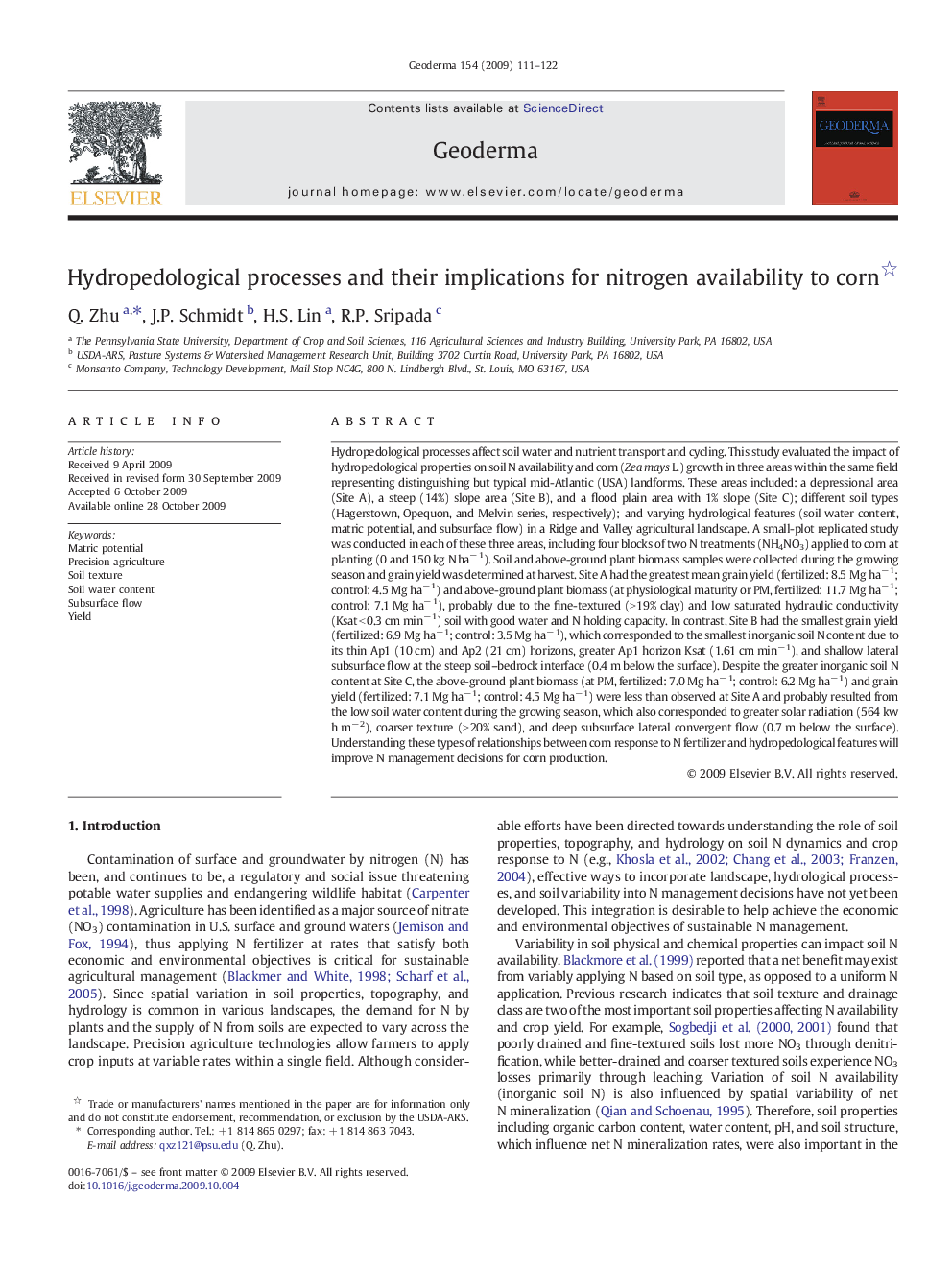| Article ID | Journal | Published Year | Pages | File Type |
|---|---|---|---|---|
| 4574431 | Geoderma | 2009 | 12 Pages |
Hydropedological processes affect soil water and nutrient transport and cycling. This study evaluated the impact of hydropedological properties on soil N availability and corn (Zea mays L.) growth in three areas within the same field representing distinguishing but typical mid-Atlantic (USA) landforms. These areas included: a depressional area (Site A), a steep (14%) slope area (Site B), and a flood plain area with 1% slope (Site C); different soil types (Hagerstown, Opequon, and Melvin series, respectively); and varying hydrological features (soil water content, matric potential, and subsurface flow) in a Ridge and Valley agricultural landscape. A small-plot replicated study was conducted in each of these three areas, including four blocks of two N treatments (NH4NO3) applied to corn at planting (0 and 150 kg N ha− 1). Soil and above-ground plant biomass samples were collected during the growing season and grain yield was determined at harvest. Site A had the greatest mean grain yield (fertilized: 8.5 Mg ha− 1; control: 4.5 Mg ha− 1) and above-ground plant biomass (at physiological maturity or PM, fertilized: 11.7 Mg ha− 1; control: 7.1 Mg ha− 1), probably due to the fine-textured (> 19% clay) and low saturated hydraulic conductivity (Ksat < 0.3 cm min− 1) soil with good water and N holding capacity. In contrast, Site B had the smallest grain yield (fertilized: 6.9 Mg ha− 1; control: 3.5 Mg ha− 1), which corresponded to the smallest inorganic soil N content due to its thin Ap1 (10 cm) and Ap2 (21 cm) horizons, greater Ap1 horizon Ksat (1.61 cm min− 1), and shallow lateral subsurface flow at the steep soil–bedrock interface (0.4 m below the surface). Despite the greater inorganic soil N content at Site C, the above-ground plant biomass (at PM, fertilized: 7.0 Mg ha− 1; control: 6.2 Mg ha− 1) and grain yield (fertilized: 7.1 Mg ha− 1; control: 4.5 Mg ha− 1) were less than observed at Site A and probably resulted from the low soil water content during the growing season, which also corresponded to greater solar radiation (564 kw h m− 2), coarser texture (> 20% sand), and deep subsurface lateral convergent flow (0.7 m below the surface). Understanding these types of relationships between corn response to N fertilizer and hydropedological features will improve N management decisions for corn production.
